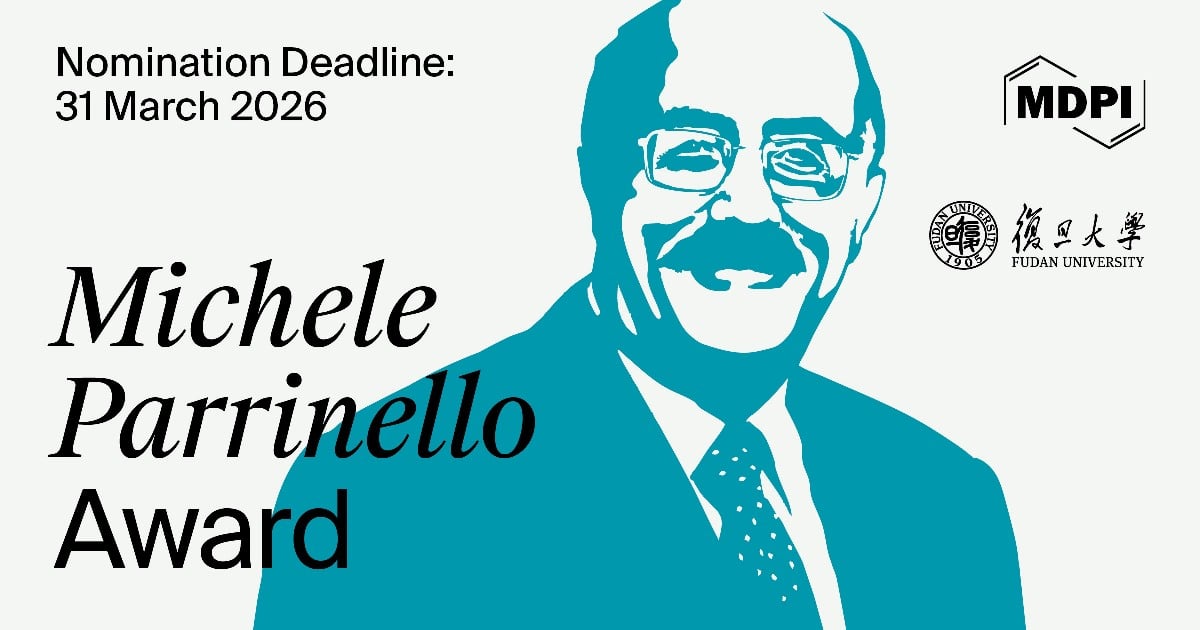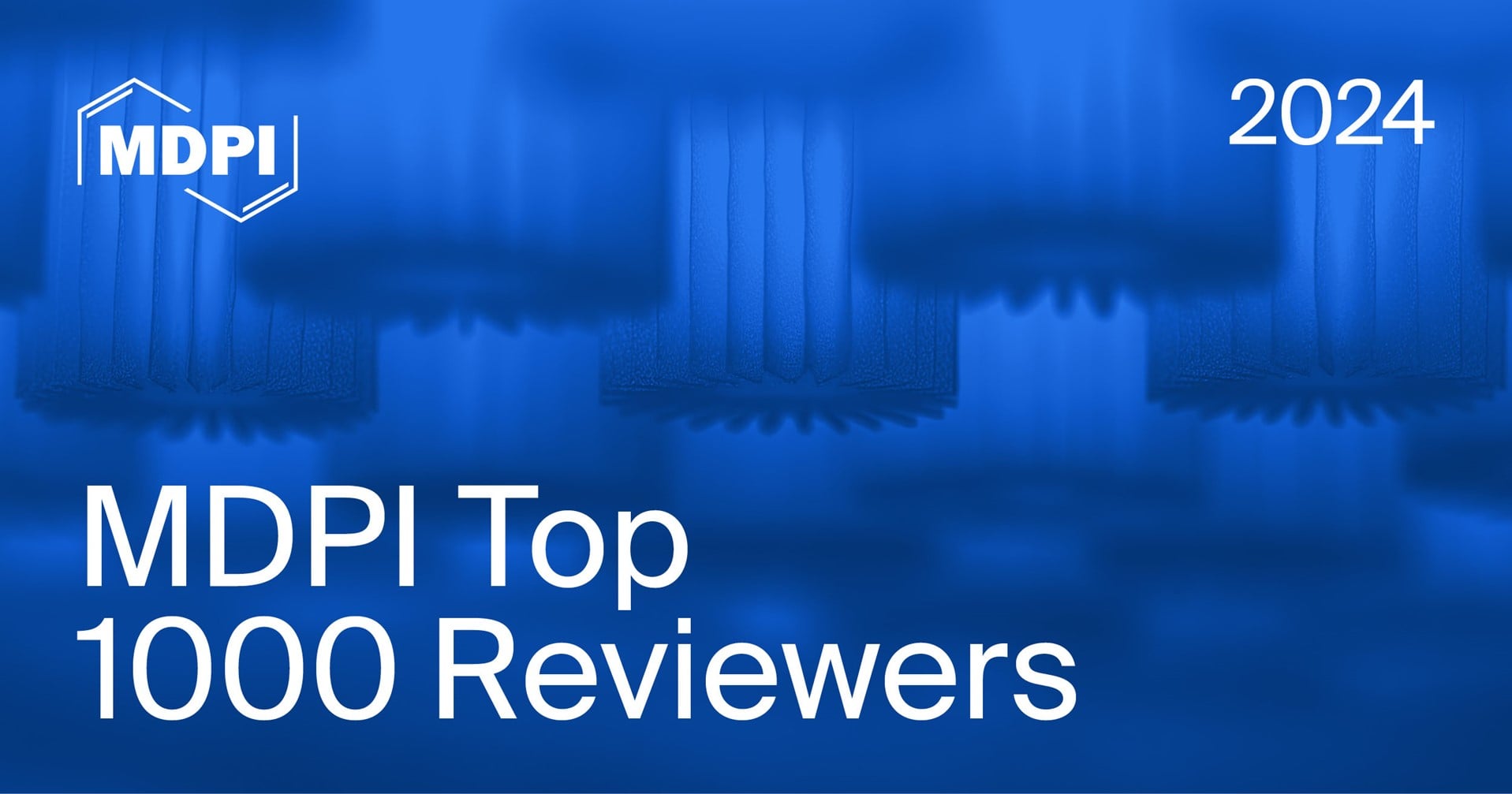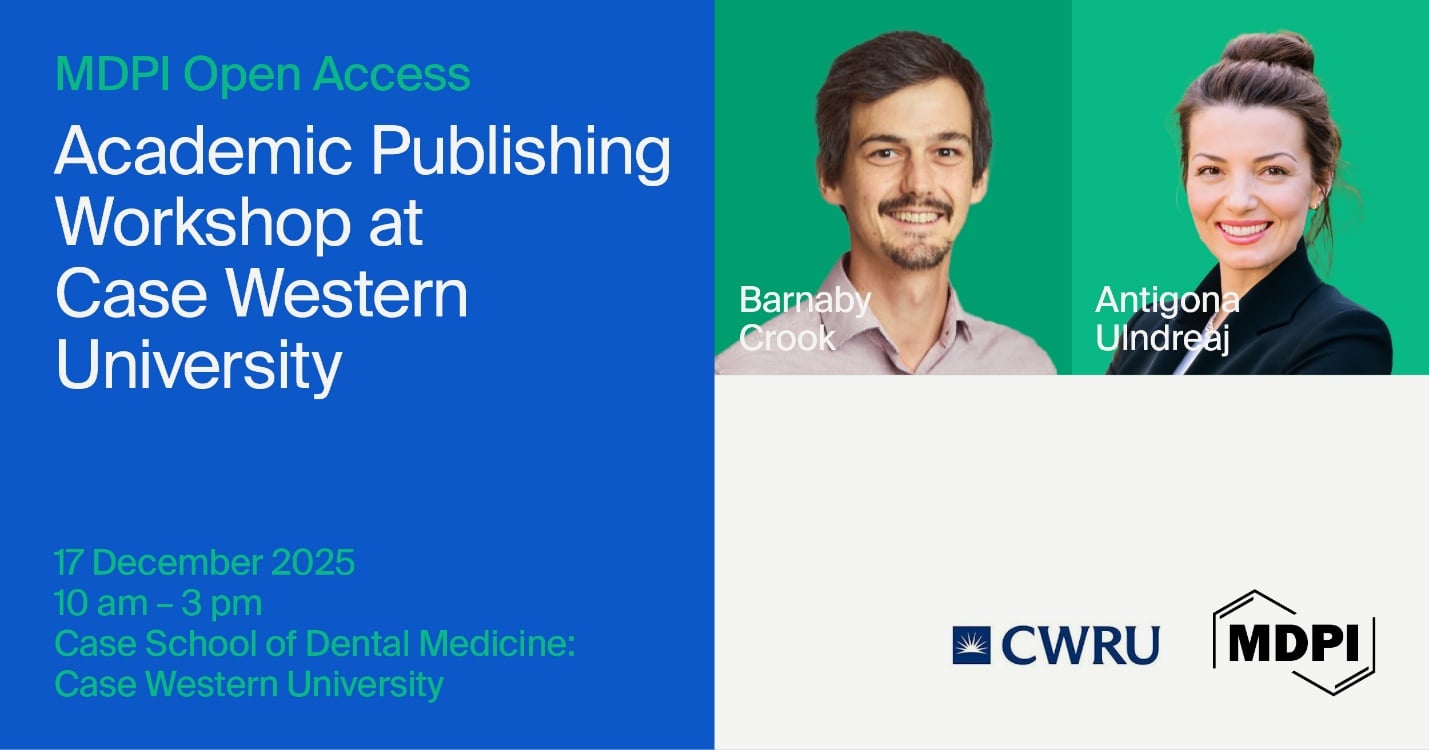Journal Description
Publications
Publications
is an international, peer-reviewed, open access journal on scholarly publishing, published quarterly online by MDPI.
- Open Access— free for readers, with article processing charges (APC) paid by authors or their institutions.
- High Visibility: indexed within Scopus, ESCI (Web of Science), RePEc, dblp, and other databases.
- Journal Rank: JCR - Q2 (Information Science and Library Science) / CiteScore - Q1 (Communication)
- Open Peer-Review: authors have the option for all reviewer comments and editorial decisions to be published along with the final paper. For more, see: Editorial, Paper with Review Comments.
- Rapid Publication: manuscripts are peer-reviewed and a first decision is provided to authors approximately 22.9 days after submission; acceptance to publication is undertaken in 4.8 days (median values for papers published in this journal in the first half of 2025).
- Recognition of Reviewers: reviewers who provide timely, thorough peer-review reports receive vouchers entitling them to a discount on the APC of their next publication in any MDPI journal, in appreciation of the work done.
Impact Factor:
2.5 (2024);
5-Year Impact Factor:
3.7 (2024)
Latest Articles
Regaining Scientific Authority in a Post-Truth Landscape
Publications 2025, 13(4), 65; https://doi.org/10.3390/publications13040065 - 9 Dec 2025
Abstract
Recent decades have seen a rise of anti-science rhetoric, fueled by scientific scandals and failures of peer review, and the rise of trainable generative AI spreading misinformation. We argue, moreover, that the continued erosion of scientific authority also arises from inherent features in
[...] Read more.
Recent decades have seen a rise of anti-science rhetoric, fueled by scientific scandals and failures of peer review, and the rise of trainable generative AI spreading misinformation. We argue, moreover, that the continued erosion of scientific authority also arises from inherent features in science and academia, including a reliance on publication as a method for gaining professional credibility and success. Addressing this multifaceted challenge necessitates a concerted effort across several key areas: strengthening scientific messaging, combating misinformation, rebuilding trust in scientific authority, and fundamentally rethinking academic professional norms. Taking these steps will require widespread effort, but if we want to rebuild trust with the public, we must make significant and structural changes to the production and dissemination of science.
Full article
(This article belongs to the Special Issue What Does the Anti-Science Trend Mean for Scholarly Publishing)
Open AccessArticle
Exploring the Citation and Impact Advantages of Open Access Papers in Hybrid Journals: A Case Study of Biochemistry Publications
by
Qiuyu Zhu, Jing Li, Yifei Chen, Yuqing Zhang, Jing Li and Junren Ming
Publications 2025, 13(4), 64; https://doi.org/10.3390/publications13040064 - 5 Dec 2025
Abstract
►▼
Show Figures
Open Access (OA) has emerged as a pivotal driver shaping the dissemination scope and academic impact of research findings. To clarify the impact of publishing models such as open access on the citation performance of biochemical papers, this study selects 177,745 biochemistry professional
[...] Read more.
Open Access (OA) has emerged as a pivotal driver shaping the dissemination scope and academic impact of research findings. To clarify the impact of publishing models such as open access on the citation performance of biochemical papers, this study selects 177,745 biochemistry professional papers included in the core collection of the Web of Science (WoS CC) as the research data; we conduct an analysis of citation and impact advantages in biochemistry research. Employing correlation analysis, baseline regression modeling, and two-way ANOVA, our analysis indicates that: OA publications in biochemistry exhibit notable citation and impact advantages, which are positively correlated with the degree of openness, and the key determinants of the OA advantage encompass funding sources, reference count, and publication region. At present, China accounts for a disproportionately small proportion of OA papers in this field. In the context of the open-science paradigm, Chinese academic journals must systematically address their developmental bottlenecks and formulate publication innovation strategies to enhance the quality of academic publishing.
Full article

Figure 1
Open AccessReview
The Epistemic Downside of Using LLM-Based Generative AI in Academic Writing
by
Bor Luen Tang
Publications 2025, 13(4), 63; https://doi.org/10.3390/publications13040063 - 1 Dec 2025
Abstract
There is now widespread use of large language (LLM)-based generative artificial intelligence (AI) tools in academic research and writing. While these are convenient, quick, and output enhancing, they also arguably incur ethical issues, such as questionable authenticity and plagiarism. Here, I explore epistemological
[...] Read more.
There is now widespread use of large language (LLM)-based generative artificial intelligence (AI) tools in academic research and writing. While these are convenient, quick, and output enhancing, they also arguably incur ethical issues, such as questionable authenticity and plagiarism. Here, I explore epistemological aspects of AI use in academic writing and posit that there is evidence for three related pitfalls in AI use that should not be ignored. These include (1) epistemic detriment or harm in terms of illusions of understanding, (2) potential for cognitive dulling or impairment, and (3) AI dependency (both habitual and/or emotional). Thus, any potential infringements of academic ethics aside, AI use in academic writing incurs intrinsic problems that are epistemic in nature. These epistemic downsides call for restraint and moderation beyond regulatory measures to address ethical issues in AI use.
Full article
Open AccessArticle
Bias in Citation Visibility: Temporal Dynamics and the Unequal Life Cycle of Academic Articles—Evidence from SME and Internationalization Research
by
Reyner Pérez-Campdesuñer, Alexander Sánchez-Rodríguez, Rodobaldo Martínez-Vivar, Margarita De Miguel-Guzmán and Gelmar García-Vidal
Publications 2025, 13(4), 62; https://doi.org/10.3390/publications13040062 - 1 Dec 2025
Abstract
This study analyzes the temporal evolution of citations received by academic articles in the field of micro, small, and medium-sized enterprises (SMEs) and internationalization processes, with the aim of identifying patterns of growth and decline in scientific visibility. Based on a dataset of
[...] Read more.
This study analyzes the temporal evolution of citations received by academic articles in the field of micro, small, and medium-sized enterprises (SMEs) and internationalization processes, with the aim of identifying patterns of growth and decline in scientific visibility. Based on a dataset of 1936 articles retrieved from Scopus, we constructed an article–year panel that enabled the application of multiple statistical approaches. Discrete-time survival models showed that the annual probability of receiving at least one citation is initially low, increases slightly until the fifth year, and then declines progressively thereafter. Negative binomial regression confirmed significant growth during the first five years, followed by a slowdown. Kaplan–Meier estimations reinforced this finding by showing that the cumulative proportion of articles receiving their first citation within a decade remains limited. These results confirm that citation dynamics are nonlinear and subject to early obsolescence, with most visibility concentrated in the short term. Importantly, this temporal bias in indexing and evaluation systems disproportionately favors recent publications while undervaluing older but still influential research. Such structural bias has profound implications for visibility and equity in scholarly communication, especially for disciplines and regions where citation cycles are longer. The findings thus validate the study’s propositions: first, that citation growth slows significantly after the fifth year, and second, that this slowdown represents a structural bias that amplifies inequities in research evaluation.
Full article
(This article belongs to the Special Issue Bias in Indexing: Effects on Visibility and Equity)
►▼
Show Figures

Figure 1
Open AccessArticle
Ethical Considerations for the Use of Artificial Intelligence in Linguistics Journal Publishing: Combining Hybrid Thematic Analysis and Critical Discourse Analysis
by
Xuan Wang and Xinyi Zhang
Publications 2025, 13(4), 61; https://doi.org/10.3390/publications13040061 - 25 Nov 2025
Abstract
The immense potential of artificial intelligence (AI) in academic journal publishing has significantly impacted scholarly communication between stakeholders, leading to increased research into ethical considerations for AI use in academic publishing. Due to the contextual nature of ethics and the ontological base of
[...] Read more.
The immense potential of artificial intelligence (AI) in academic journal publishing has significantly impacted scholarly communication between stakeholders, leading to increased research into ethical considerations for AI use in academic publishing. Due to the contextual nature of ethics and the ontological base of language as its own object of inquiry, the conceptual framework and underlying ideologies of AI ethics in linguistics deserve attention. In this study, we address the call for these ethical considerations by combining a hybrid thematic analysis (HTA) of the ethical guidelines available on 144 Social Sciences Citation Index (SSCI) linguistics journals’ and 11 corresponding publishers’ websites as of 31 October 2025, and a critical discourse analysis (CDA) case study on Language Testing, a representative journal with self-developed AI ethical guidelines. Through the HTA, we identified seven themes: accountability, authorship, citation practices, copyright, long-term governance, human agency, and transparency. The role allocation of CDA demonstrated that the AI ethical guidelines independently established by the linguistics journal expand the scope of stakeholders to include the sources of research data and technology, covering the informed consent of research participants and the responsibilities of the AI tool operators. Moreover, AI tools are given a beneficialized role, suggesting a more technology-assisted-oriented perspective and reflecting deeper trust in AI’s involvement. Through the findings, our study contributes to the broader understanding of ethical governance in relation to AI usage in discipline-based communication, highlighting the need for a more dialogic and diverse framework to share responsibility among stakeholders to promote the ethical use of AI.
Full article
Open AccessArticle
Preserving Culinary Heritage Through AI: Sustainable Digitisation of Granny Josie’s Notebooks
by
Karol Król, Maria Szkutak and Elżbieta Legutko
Publications 2025, 13(4), 60; https://doi.org/10.3390/publications13040060 - 20 Nov 2025
Abstract
Granny Josie’s Notebooks are salvaged notebooks written in 1946–1947 during a rural domestic science course for girls. This study aims to extract historically valuable information on the culinary heritage of post-war Poland and the housekeeping role attributed to women, with a specific focus
[...] Read more.
Granny Josie’s Notebooks are salvaged notebooks written in 1946–1947 during a rural domestic science course for girls. This study aims to extract historically valuable information on the culinary heritage of post-war Poland and the housekeeping role attributed to women, with a specific focus on assessing the performance of Large Language Models (LLMs) in corpus analysis. The research began with an inquiry into the historical context of the notebooks. Three notebooks were digitised and stored in data repositories, then converted into editable vector text. The corpus was analysed with AI, and the results were compared with a text profile prepared by qualified linguists. According to the AI, the texts’ characteristic features are descriptions of nearly ritual food preparation, serving, and table setting. Women appear as central figures in post-war Polish housekeeping, acting as guardians of the hearth and planners and preparers of meals. However, AI’s interpretations were often overly idealised, with embellished descriptions that did not fully reflect the actual text. The digitisation and analysis of Granny Josie’s Notebooks provided new information about the culinary heritage of post-war Poland and preserved these materials from oblivion, while offering insights into the potential application of LLMs in corpus analysis.
Full article
(This article belongs to the Special Issue Digital Humanities and Ancient Manuscripts)
►▼
Show Figures

Figure 1
Open AccessReview
An Assessment of Scientific Productivity: Review in the Area of Agricultural and Biological Sciences in Ecuador Using Scientometrics and Lotka’s Law
by
William Viera-Arroyo, Lya Vera, Martín Moya, Duther López, Wilson Vásquez-Castillo and Carlos Caicedo
Publications 2025, 13(4), 59; https://doi.org/10.3390/publications13040059 - 19 Nov 2025
Abstract
►▼
Show Figures
Scientific production is a key indicator of a country’s academic and institutional development. This review followed a quantitative and descriptive bibliometric design using Lotka’s Law, aimed at analysing Ecuador’s scientific production in the area of Agricultural and Biological Sciences from 2014 to 2024.
[...] Read more.
Scientific production is a key indicator of a country’s academic and institutional development. This review followed a quantitative and descriptive bibliometric design using Lotka’s Law, aimed at analysing Ecuador’s scientific production in the area of Agricultural and Biological Sciences from 2014 to 2024. The bibliographic data were obtained from the Scopus database, which offers comprehensive coverage of the peer-reviewed literature and standardised metadata. Data (2881 documents) revealed publication patterns, collaboration networks and impact indicators. Lotka’s Law was applied to evaluate and describe author productivity among researchers affiliated with Ecuadorian universities and the Instituto Nacional de Investigaciones Agropecuarias (INIAP). The model yielded an average n-parameter of 2.56, indicating a moderate concentration among a small group of researchers. There was a sustained growth in scientific publications, especially after 2018, with a high proportion published in Q1 and Q2 journals. The institutions with the most relevant affiliations included PUCE, UTM, USFQ, INIAP, ESPOL and UDLA, all maintaining consistent contributions to scientific output. The keyword co-occurrence analysis revealed a thematic focus on biodiversity, taxonomy and conservation. The limitations of this study were related to the fact that the analysis was based only on data retrieved from the Scopus database and that the use of Lotka’s Law assumes a theoretical distribution that does not fully account for contextual factors. Overall, Ecuador’s scientific system shows progress in terms of research productivity; however, it requires further development and the strengthening of institutional and human research capacities to generate more equitable scientific production in terms of the number of researchers.
Full article
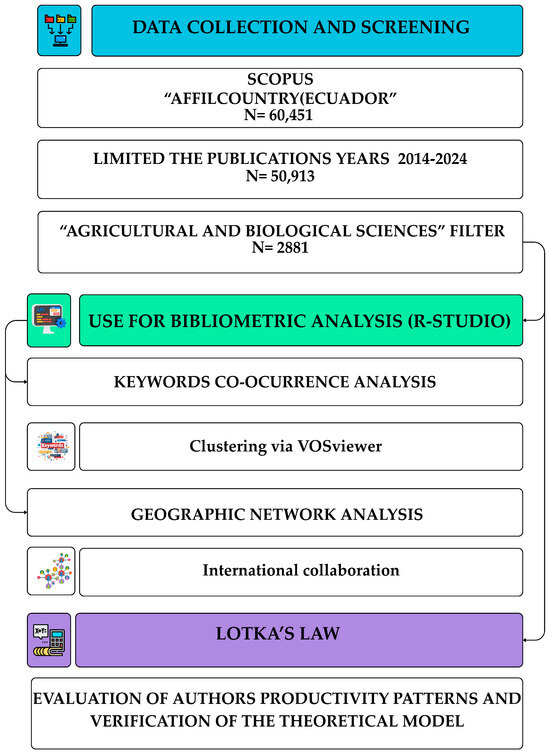
Figure 1
Open AccessArticle
Bibliometric Outlook on Economics and Business Research in Kazakhstan (2019–2023)
by
Diana Amirbekova, Targyn Nauryz, Mariyam Taskinbayeva, Madina Bigabatova and Aasso Ziro
Publications 2025, 13(4), 58; https://doi.org/10.3390/publications13040058 - 18 Nov 2025
Abstract
►▼
Show Figures
This study examines the evolution of Kazakhstani research in the fields of economics and business research. We analyzed Scopus and Dimensions records for 2019–2023 following a PRISMA-like workflow with fully reproducible queries and time-stamped data extractions. We implemented both Bradford’s law of scattering
[...] Read more.
This study examines the evolution of Kazakhstani research in the fields of economics and business research. We analyzed Scopus and Dimensions records for 2019–2023 following a PRISMA-like workflow with fully reproducible queries and time-stamped data extractions. We implemented both Bradford’s law of scattering and collaboration analysis. We report both journal-level (Scopus) and publication-level (Dimensions) results as complementary perspectives. Results show the applicability of Bradford’s law of scattering to research publications in Economics, Econometrics, and Finance, Business, Management, and Accounting, and Decision Sciences in Kazakhstan and globally. Collaboration analysis highlights strong regional ties and diversification. Authorship analysis reveals that 85.1% of publications have a Kazakhstan-affiliated first author. Publications were classified into three categories: Kazakhstan-Only (59.0%, N = 1585), International Collaboration with Kazakhstan-led authorship (31.5%, N = 845), and International Collaboration with Non-Kazakhstan-led authorship (9.5%, N = 255). International collaborations had 69–92% higher citation impact than domestic-only publications. The expansion of citing countries doubled in 2023 compared with 2019. Our contributions to bibliometric analysis and science policy are two-fold. First, we provide a comprehensive comparative analysis of publication patterns between Kazakhstani and global journals in economics and business-related fields, revealing specific areas requiring development. Second, we identify collaboration patterns, including citation analysis of studied fields. The analysis revealed strategies that can be applied in other emerging economies.
Full article

Figure 1
Open AccessArticle
Integrating Scientific Readiness and Added Scientific Value: A Multiplicative Conceptual Model for Research Assessment
by
Eldar Knar
Publications 2025, 13(4), 57; https://doi.org/10.3390/publications13040057 - 10 Nov 2025
Abstract
►▼
Show Figures
Modern approaches to research assessment often treat two independent dimensions: the degree of readiness (the progress of scientific maturity) and the Added Scientific Value (novelty, rigor, reproducibility, and societal significance). The present study aims to develop an integrative model that links the stepwise
[...] Read more.
Modern approaches to research assessment often treat two independent dimensions: the degree of readiness (the progress of scientific maturity) and the Added Scientific Value (novelty, rigor, reproducibility, and societal significance). The present study aims to develop an integrative model that links the stepwise logic of Scientific Readiness Levels (SRLs) with the continuous evaluation of Added Scientific Value (ASV). To achieve this, we construct a two-dimensional quantitative framework, SRL × ASV, in which discrete readiness levels are combined with the multiplicative aggregation of normalized qualitative indicators—including novelty, rigor, reproducibility, openness, impact, and collaboration. Advancement to a higher readiness level becomes possible only when the evidential criteria are simultaneously satisfied and the ASV threshold value is reached. The model is formally defined and illustrated via the example of Kazakhstan’s national science funding system. The results demonstrate that the integration of SRL and ASV creates a reproducible and transparent decision-making structure in which weak components cannot be compensated by strong ones, and excessive dependence on purely metric-based evaluations is eliminated. By uniting maturity and quality within a single coherent system, the SRL + ASV model bridges the gap between developmental staging and scientific value, transforming research assessment into a transparent, evidence-based, and continuously improvable process applicable to the governance of responsible and reproducible science.
Full article
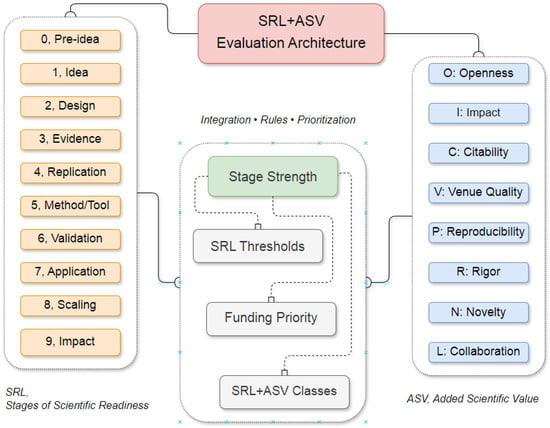
Figure 1
Open AccessArticle
Evolution of Inter-University Research Collaboration in the Chengdu–Chongqing Economic Circle (2005–2024): A Biblio-Metric Perspective
by
Tao Zhang, Prachuab Tongsri and Chakrit Ponathong
Publications 2025, 13(4), 56; https://doi.org/10.3390/publications13040056 - 3 Nov 2025
Abstract
►▼
Show Figures
The Chengdu–Chongqing Economic Circle (CCEC) represents a key regional development initiative in China. University research collaboration plays a vital role in advancing its innovation ecosystem and supporting sustainable growth. This study examines inter-university collaboration among 47 public universities in the CCEC based on
[...] Read more.
The Chengdu–Chongqing Economic Circle (CCEC) represents a key regional development initiative in China. University research collaboration plays a vital role in advancing its innovation ecosystem and supporting sustainable growth. This study examines inter-university collaboration among 47 public universities in the CCEC based on 53,968 co-authored publications from 2005 to 2024. Using bibliometric and visualization techniques in CiteSpace 6.4.R2, it explores the structure and evolution of collaboration from institutional, thematic, and author perspectives. The results reveal a steady expansion of collaborative activities driven by national innovation strategies. Leading institutions such as Sichuan University, UESTC, and Chongqing University act as central hubs connecting diverse research communities. Collaboration has diversified from traditional fields toward interdisciplinary areas including materials, environmental science, and applied mathematics. Author networks are becoming more cohesive, reflecting stronger knowledge integration across universities. The study highlights how policy-driven collaboration fosters regional innovation capacity and provides evidence-based insights for strengthening university networks and advancing the CCEC’s role as a science and technology innovation hub in western China.
Full article

Figure 1
Open AccessArticle
A Novel Methodology for Identifying the Top 1% Scientists Using a Composite Performance Index
by
Alexey Remizov, Shazim Ali Memon and Saule Sadykova
Publications 2025, 13(4), 55; https://doi.org/10.3390/publications13040055 - 2 Nov 2025
Abstract
►▼
Show Figures
There is a growing need for comprehensive and transparent frameworks in bibliometric evaluation that support fairer assessments and capture the multifaceted nature of research performance. This study proposes a novel methodology for identifying top-performing researchers based on a composite performance index (CPI). Unlike
[...] Read more.
There is a growing need for comprehensive and transparent frameworks in bibliometric evaluation that support fairer assessments and capture the multifaceted nature of research performance. This study proposes a novel methodology for identifying top-performing researchers based on a composite performance index (CPI). Unlike existing rankings, this framework presents a multidimensional approach by integrating sixteen weighted bibliometrics metrics, spanning research productivity, citation, publications in top journal percentiles, authorship roles, and international collaboration, into a single CPI, enabling a more nuanced and equitable evaluation of researcher performance. Data were retrieved from SciVal for 1996–2025. Two ranking exercises were conducted with Kazakhstan as the analytical unit. Subject-specific rankings identified the top 1% authors within different research areas, while subject-independent rankings highlighted the overall top 1%. CPI distributions varied markedly across disciplines. A comparative analysis with the Stanford/Elsevier global top 2% list was conducted as additional benchmarking. The results highlight that academic excellence depends on a broad spectrum of strengths beyond just productivity, particularly in competitive disciplines. The CPI provides a consistent and adaptable tool for assessing and recognizing research performance; however, future refinements should enhance data coverage, improve representation of early-career researchers, and integrate qualitative aspects.
Full article

Figure 1
Open AccessEditorial
Editorial: 10th Anniversary Special Issue “PUBMET2023 Conference on Scholarly Communication in the Context of Open Science”
by
Nikolina Peša Pavlović, Jadranka Stojanovski and Iva Grabarić Andonovski
Publications 2025, 13(4), 54; https://doi.org/10.3390/publications13040054 - 2 Nov 2025
Abstract
Over the past decade, the Open Science movement has profoundly transformed the way research is conducted, communicated, and assessed [...]
Full article
(This article belongs to the Special Issue 10th Anniversary Special Issue "PUBMET2023 Conference on Scholarly Communication in the Context of Open Science")
Open AccessArticle
No Fees, No Barriers—But What Standards? Considerations on the DIAMAS Diamond OA Standard Applied to a Public Health Journal
by
Annarita Barbaro, Maria Cristina Barbaro and Federica Napolitani
Publications 2025, 13(4), 53; https://doi.org/10.3390/publications13040053 - 21 Oct 2025
Abstract
The Diamond Open Access (OA) model—characterized by the absence of fees for both authors and readers—has gained increasing attention in recent years. A wide range of scholarly journals are using this model, as emerged while mapping the Diamond OA landscape worldwide; however, some
[...] Read more.
The Diamond Open Access (OA) model—characterized by the absence of fees for both authors and readers—has gained increasing attention in recent years. A wide range of scholarly journals are using this model, as emerged while mapping the Diamond OA landscape worldwide; however, some still depend on hybrid revenue streams such as print sales, subscriptions, and marginal APCs. A number of recent initiatives underlined the need to increase quality assurance, sustainability, and cooperation within the Diamond OA ecosystem. Among them, the Diamond OA Standard (DOAS), a framework comprising detailed guidelines and a self-assessment tool to facilitate Diamond OA publishing practices, was created by the DIAMAS project, sponsored by the European Commission. Annali dell’Istituto Superiore di Sanità, the official journal of the Italian leading public health research institution, is a Diamond OA journal. To improve transparency and quality, the editorial team used the DOAS self-assessment tool to evaluate its compliance with the standards proposed by DIAMAS and to identify potential areas for improvement. This article presents the process and findings of the DOAS self-assessment tool conducted on Annali ISS, with the aim of sharing insights and support with other journals seeking to align with the DOAS framework.
Full article
(This article belongs to the Special Issue Diamond Open Access)
►▼
Show Figures

Figure 1
Open AccessArticle
Determinants of Scientific Article Publication Among Peruvian Physicians and Orthopedic Residents
by
Rodrigo Alejandro-Salinas, Diego A. Maticorena-Quevedo, Alfonso Barnechea-Rey, Percy Herrera-Añazco and Vicente A. Benites-Zapata
Publications 2025, 13(4), 52; https://doi.org/10.3390/publications13040052 - 10 Oct 2025
Abstract
►▼
Show Figures
Background: Orthopedic scientific publications play an important role worldwide. Because of the limited evidence in the Latin American literature, we aimed to evaluate the determinants of scientific publication among Peruvian orthopedics as an approach to the Latin American context. Methods: Analytical cross-sectional study.
[...] Read more.
Background: Orthopedic scientific publications play an important role worldwide. Because of the limited evidence in the Latin American literature, we aimed to evaluate the determinants of scientific publication among Peruvian orthopedics as an approach to the Latin American context. Methods: Analytical cross-sectional study. Orthopedic specialists and residents were enrolled during the 52nd Peruvian National Congress of Orthopedics and Traumatology. A form validated by experts was applied to collect variables. The crude and adjusted coefficients were calculated using bivariate and multivariate regression with 95% confidence intervals. Results: A total of 310 participants were included in our study. The prevalence of the scientific orthopedic publication was 34.84%. Multivariate regression showed that, working in a private hospitals, having an interest in tumors and pediatric orthopedics, being involved in teaching activity, belonging to a scientific society other than the Peruvian Society of Orthopedics and Traumatology, having more than one research project, having an international rotation, and active participation in meetings were factors associated with publishing orthopedic scientific articles, while coming from a university in the highlands as an undergraduate and having more than ten shifts per month was associated with publishing fewer scientific articles. Among residents, having had an international rotation was associated with publishing scientific articles. Conclusions: The determinants of scientific production described will serve to increase scientific production in different contexts considering the orthopedist’s training stage.
Full article

Figure 1
Open AccessArticle
Enhancing Research Visibility: A Comparative Study on the Implementation of CRIS Systems at Universidad Católica de Santa María and Its Contrast with Other Universities
by
Javier Fernando Angulo-Osorio, César Daniel Valdivia-Portugal and Karina Rosas-Paredes
Publications 2025, 13(4), 51; https://doi.org/10.3390/publications13040051 - 5 Oct 2025
Abstract
Research visibility has become a critical issue for universities, yet the institutional conditions that shape it remain underexplored. While Current Research Information Systems (CRISs) provide essential infrastructure for managing publications and researcher profiles, their impact depends on broader governance and cultural factors. This
[...] Read more.
Research visibility has become a critical issue for universities, yet the institutional conditions that shape it remain underexplored. While Current Research Information Systems (CRISs) provide essential infrastructure for managing publications and researcher profiles, their impact depends on broader governance and cultural factors. This study compares four universities—two in Peru, one in Chile, and one in Spain—that have adopted the Pure CRIS platform. Data were manually extracted from institutional portals and analyzed descriptively, using normalized indicators such as publications per researcher, Sustainable Development Goal (SDG) alignment, and collaboration networks. Although based on a limited sample, the analysis highlights substantial contrasts: European institutions show consolidated integration of CRIS into national evaluation systems, while Latin American universities remain at earlier stages of adoption, with fragmented policies and limited international reach. The findings suggest that technological platforms alone are insufficient; institutional commitment, coherent policies, and academic cultures that value dissemination are decisive. These insights contribute a comparative framework to guide universities, particularly in Latin America, seeking to strengthen their global research visibility.
Full article
Open AccessArticle
A Decade of Deepfake Research in the Generative AI Era, 2014–2024: A Bibliometric Analysis
by
Btissam Acim, Mohamed Boukhlif, Hamid Ouhnni, Nassim Kharmoum and Soumia Ziti
Publications 2025, 13(4), 50; https://doi.org/10.3390/publications13040050 - 2 Oct 2025
Abstract
The recent growth of generative artificial intelligence (AI) has brought new possibilities and revolutionary applications in many fields. It has also, however, created important ethical and security issues, especially with the abusive use of deepfakes, which are artificial media that can propagate very
[...] Read more.
The recent growth of generative artificial intelligence (AI) has brought new possibilities and revolutionary applications in many fields. It has also, however, created important ethical and security issues, especially with the abusive use of deepfakes, which are artificial media that can propagate very realistic but false information. This paper provides an extensive bibliometric, statistical, and trend analysis of deepfake research in the age of generative AI. Utilizing the Web of Science (WoS) database for the years 2014–2024, the research identifies key authors, influential publications, collaboration networks, and leading institutions. Biblioshiny (Bibliometrix R package, University of Naples Federico II, Naples, Italy) and VOSviewer (version 1.6.20, Centre for Science and Technology Studies, Leiden University, Leiden, The Netherlands) are utilized in the research for mapping the science production, theme development, and geographical distribution. The cutoff point of ten keyword frequencies by occurrence was applied to the data for relevance. This study aims to provide a comprehensive snapshot of the research status, identify gaps in the knowledge, and direct upcoming studies in the creation, detection, and mitigation of deepfakes. The study is intended to help researchers, developers, and policymakers understand the trajectory and impact of deepfake technology, supporting innovation and governance strategies. The findings highlight a strong average annual growth rate of 61.94% in publications between 2014 and 2024, with China, the United States, and India as leading contributors, IEEE Access among the most influential sources, and three dominant clusters emerging around disinformation, generative models, and detection methods.
Full article
(This article belongs to the Special Issue AI in Academic Metrics and Impact Analysis)
►▼
Show Figures

Figure 1
Open AccessArticle
Geographic Variation in LLM DOI Fabrication: Cross-Country Analysis of Citation Accuracy Across Four Large Language Models
by
Eungi Kim, Frankline Kipchumba and Sein Min
Publications 2025, 13(4), 49; https://doi.org/10.3390/publications13040049 - 1 Oct 2025
Abstract
►▼
Show Figures
This study evaluates digital object identifier (DOI) hallucination in large language model (LLM)-generated scholarly citations, with a focus on systematic geographic disparities. To conduct this study, we systematically evaluated four LLMs (GPT-4o-mini, Claude-3-haiku, Gemini-2.0-flash-lite, and DeepSeek V3) using standardized information behavior prompts across
[...] Read more.
This study evaluates digital object identifier (DOI) hallucination in large language model (LLM)-generated scholarly citations, with a focus on systematic geographic disparities. To conduct this study, we systematically evaluated four LLMs (GPT-4o-mini, Claude-3-haiku, Gemini-2.0-flash-lite, and DeepSeek V3) using standardized information behavior prompts across ten countries with diverse income levels. The models generated 3451 citations, which we validated using the CrossRef API. The results showed that DOI hallucination follows systematic patterns influenced by model choice, geographic context, and publication recency. Hallucination rates exceeded 80% in lower-income countries and increased sharply for publications from the 2020s across all regions. Fabricated citations—citations that appear structurally complete but contain invalid DOIs—were especially prevalent in countries such as India and Bangladesh. Model-specific factors showed the strongest association with hallucination, followed by income level and publication period. These findings raise concerns about the epistemic reliability of LLM-generated scholarly references and underscore the need for region-aware training, real-time DOI validation, and robust verification protocols in academic contexts.
Full article

Figure 1
Open AccessOpinion
Beyond the Review: The Editorial Duty to Uphold Professional Conduct
by
Stephen A. Bustin
Publications 2025, 13(4), 48; https://doi.org/10.3390/publications13040048 - 1 Oct 2025
Abstract
Peer review fails when it is delivered without fairness, accountability, or respect. When unprofessional reviews are communicated without editorial intervention, they undermine trust, distort scientific dialogue, and disproportionately harm early-career and underrepresented researchers. This article combines a detailed case study with evidence from
[...] Read more.
Peer review fails when it is delivered without fairness, accountability, or respect. When unprofessional reviews are communicated without editorial intervention, they undermine trust, distort scientific dialogue, and disproportionately harm early-career and underrepresented researchers. This article combines a detailed case study with evidence from the literature to illustrate how reviewer misconduct can escalate into editorial failure, and why such outcomes are avoidable. Mechanisms already exist to prevent them, including pre-screening, structured review forms, training, appeals processes, and reviewer tracking, but require consistent application. The central problem is not the absence of guidance, but the lack of enforcement. Restoring credibility in peer review depends on editors treating oversight as a duty of stewardship, ensuring that critique remains rigorous, constructive, and respectful.
Full article
Open AccessArticle
Is Tuberculosis Scientific Research Aligned with National Research Priorities? A Bibliometric Analysis of Peruvian Scientific Production
by
Franko O. Garcia-Solorzano, Yolanda Angulo-Bazán, Sofia Soriano-Martinez, Olenka Farfan-Zapata and Leonid Lecca
Publications 2025, 13(4), 47; https://doi.org/10.3390/publications13040047 - 1 Oct 2025
Abstract
►▼
Show Figures
Background: Focusing scientific research on the health needs of the population could ensure the development of context-specific solutions. In Peru, prioritization has been proposed as a strategy to address this issue. However, the alignment of Peruvian scientific production on tuberculosis (TB) with the
[...] Read more.
Background: Focusing scientific research on the health needs of the population could ensure the development of context-specific solutions. In Peru, prioritization has been proposed as a strategy to address this issue. However, the alignment of Peruvian scientific production on tuberculosis (TB) with the national TB research priorities (TBprios) has not been evaluated. Methods: We conducted a bibliometric analysis in Web of Science, Scopus, LILACS, SciELO, and PubMed to identify original articles focused on TB, with at least one author with Peruvian affiliation. Then, we reviewed the general objectives of each study included and verified their alignment with any TBprios. Results: We found that 73% of Peruvian scientific articles were aligned with some of the national research priorities on TB, especially those related to epidemiology and diagnostics, although no increased trends in alignment were identified across the study period. In addition, in an exploratory analysis we found that fewer than 20% of aligned studies reported receiving national funding. Conclusion: Substantial alignment was observed between the research outputs identified and TBprios. Nonetheless, this high level of alignment could also reflect the significance of TB within the social and public health agenda of Peru.
Full article

Figure 1
Open AccessArticle
Same Coin, Different Value: A Multi-Year Comparative Analysis of Financial Performance of Open Access and Legacy Publishers
by
George Peppas, Leonidas Papachristopoulos and Giannis Tsakonas
Publications 2025, 13(4), 46; https://doi.org/10.3390/publications13040046 - 24 Sep 2025
Abstract
►▼
Show Figures
We are living in an era where the demand for Open Access to knowledge is growing and the need for transparency in scientific publishing is becoming imperative. The question that arises at this stage is whether openness in knowledge constitutes the Achilles heel
[...] Read more.
We are living in an era where the demand for Open Access to knowledge is growing and the need for transparency in scientific publishing is becoming imperative. The question that arises at this stage is whether openness in knowledge constitutes the Achilles heel of the once profitable legacy publishing industry or whether it is the Trojan horse of the latter for increasing its revenues. At the same time, the question of whether Open Access publishers can ensure their sustainability through this model remains unanswered. This study implements a multi-year analysis (2019–2023) comparing the performance of Open Access and legacy publishers. Using a set of financial ratios—grouped by profitability, liquidity, efficiency, and solvency, as well as data on firm size (revenues, assets, and employee counts), we assess their financial performance. The results indicate that legacy publishers have enormous scale, stable profitability, and high leverage, but low liquidity and return on equity. On the other hand, OA publishers, although smaller, have higher returns, better liquidity, and almost zero borrowing, but with greater annual volatility. The study discusses that OA publishers, despite their small size, can be as profitable as or even more profitable than traditional publishers, thanks to flexible structures and fast cash flows, but remain vulnerable due to limited resources and the risk of acquisition. Furthermore, legacy publishers maintain their dominance by leveraging their scale, strong brands, and investment capacity while adopting or acquiring OA models, creating a competitive environment where scale and strategic differentiation are decisive.
Full article

Figure 1
Highly Accessed Articles
Latest Books
E-Mail Alert
News
Topics
Topic in
AI, Algorithms, BDCC, Computers, Data, Future Internet, Informatics, Information, MAKE, Publications, Smart Cities
Learning to Live with Gen-AI
Topic Editors: Antony Bryant, Paolo Bellavista, Kenji Suzuki, Horacio Saggion, Roberto Montemanni, Andreas Holzinger, Min ChenDeadline: 31 August 2026

Special Issues
Special Issue in
Publications
Future Developments and the Landscape of Open Access Databases in 2040
Guest Editors: Anne-Katharina Weilenmann, Houqiang YuDeadline: 31 January 2026
Special Issue in
Publications
AI in Open Access
Guest Editor: Alexandre López-BorrullDeadline: 31 January 2026
Special Issue in
Publications
Digital Humanities and Ancient Manuscripts
Guest Editor: Tong WeiDeadline: 31 January 2026
Special Issue in
Publications
Overview on Today’s AI Tools for Authors
Guest Editors: Tao Chen, Qiang Zhang, Muzhe HanDeadline: 28 February 2026





